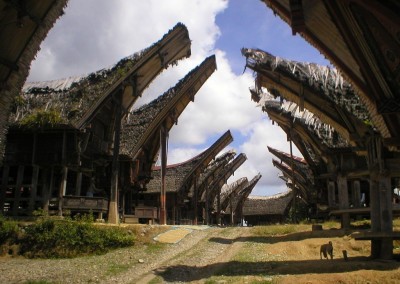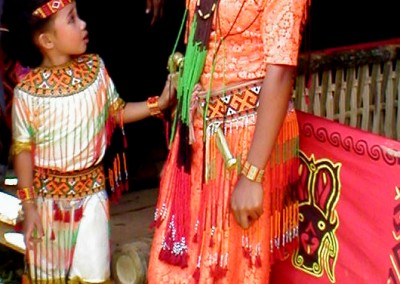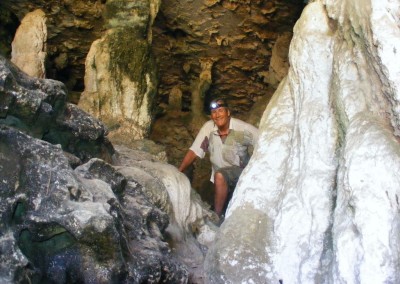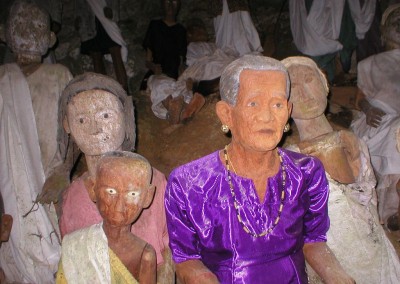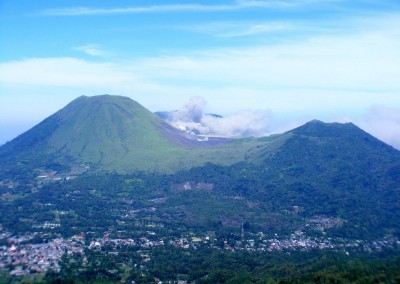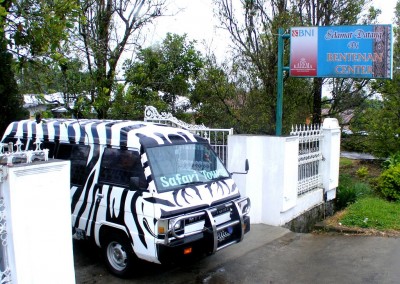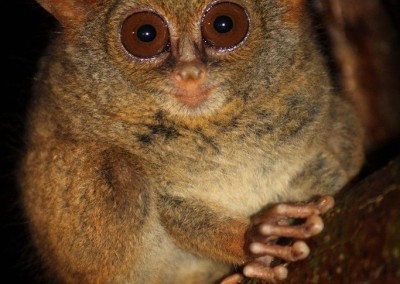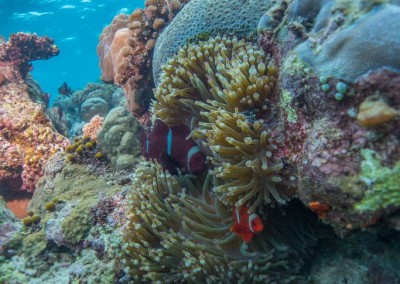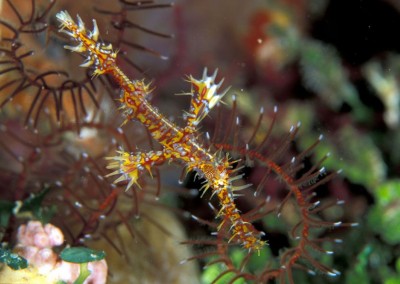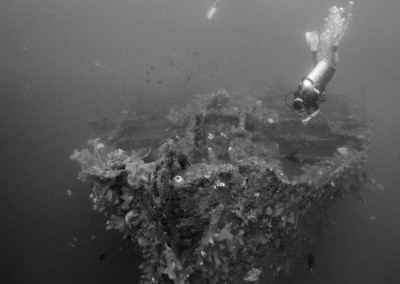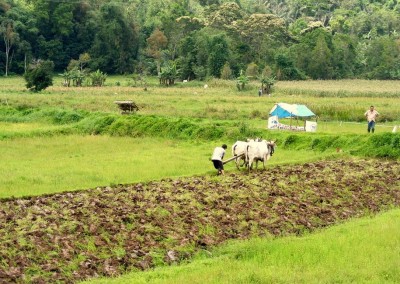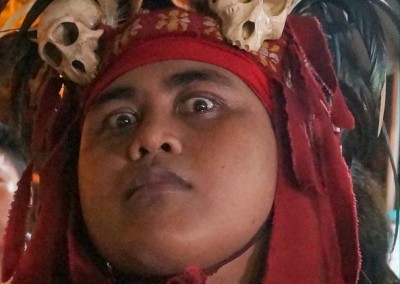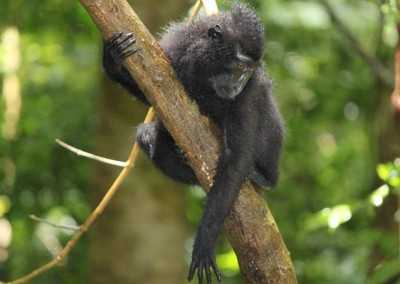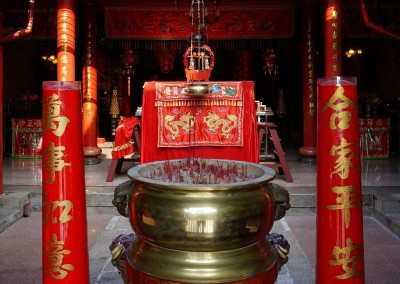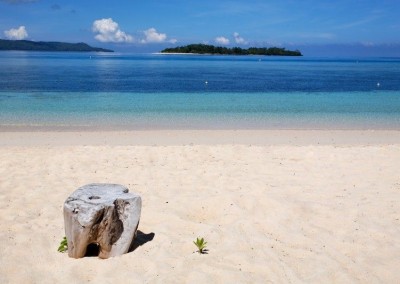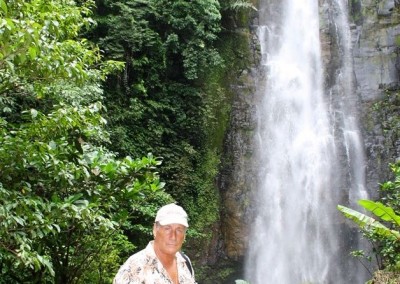About Sulawesi (formerly Celebes)
The fabled island of Sulawesi is shaped like a tropical orchid, each “petal” a peninsula, ridged with lofty mountains and surrounded by coral reefs. The Island is Indonesia’s third-largest island, with an area of 172,000 square km. Like all of Indonesia there is much cultural diversity here comprised of four major ethnic groups. It truly is a delightful potpourri of people and cultures ranging from the mysterious Toraja, who live in the mountainous center of the Sulawesi orchid, to the friendly folk of the lush northern region of Manado-Minahasa. The intriguing Bugis and Makassarese people from peninsular South Sulawesi are the stuff legends are made of. (The ‘bogey’ man of our childhood fears is rumoured to have started his career as a Bugis pirate!). The topographical variety is complete, offering spectacular mountains, scenic coastline, lakes, rice patties, and dense jungles making Sulawesi one of the few islands where a traveler can experience such cultural and marine diversity without having to travel to another country.
Animals
If you are looking for strange and different animals then Sulawesi can present a large array of unusual flora and fauna as well as several indigenous tribes. It is unique to explore, since it is home to such extraordinary animals as the babirusa, a pig-like creature with upward-curving tusks, three species of anoa, a rare pygmy buffalo resembling an antelope, four different varieties of black macaques, as well as saucer-eyed tarsier, maleo bird, a bit like a bush turkey and the marsupial cuscus.
Marine Life
Sulawesi will not let you down when it comes to marine life as well, starting at the northern part of Sulawesi one can explore the underwater habitat for months and only begin to scratch the surface of what there is to see. Bunaken National Marine Park was formally established in 1991 and is among the first of Indonesia’s growing system of marine parks. The park covers a total surface area of 89,065 hectares, 97% of which is overlain by sparkling clear, warm tropical water. The remaining 3% of the park is terrestrial, including the five islands of Bunaken, Manado Tua, Mantehage, Nain and Siladen. Although each of these islands has a special character, it is the aquatic ecosystem that attracts most naturalists. The waters of Bunaken National Marine Park are extremely deep (1566 m in Manado Bay), clear (up to 35-40 m visibility), refreshing in temperature (27-29 C) and harbor some of the highest levels of biodiversity in the world. Pick any of group of interest – corals, fish, echinoderms or sponges – and the number of families, genera or species is bound to be astonishingly high. For example, 7 of the 8 species of giant clams that occur in the world, occur in Bunaken. The park has around 70 genera of corals; compare this to a mere 10 in Hawaii. Although the exact number of fish species is unknown, it may be slightly higher than in the Philippines, where 2,500 species, or nearly 70% of all fish species known to the Indo-western Pacific, are found.
Oceanic currents may explain, in part, why Bunaken National Marine Park is such a treasure trove of biodiversity. Northeasterly currents generally sweep through the park but abundant counter currents and gyros related to lunar cycles are believed to be a trap for free swimming larvae. This is particularly true on the south side of the crescent-shaped Bunaken Island, lying in the heart of the park. A snorkler or diver in the vicinity of Lekuan or Fukui may spot over 33 species of butterfly fish and numerous types of groupers, damsels, wrasses and gobies. The gobies, smallish fish with bulging eyes and modified fins that allow them to attach to hard surfaces, are the most diverse but least known group of fish in the park.
Biologists believe that the abundance of hard corals is crucial in maintaining the high levels of diversity in the park. Hard corals are the architects of the reefs, without them, numerous marine organisms would be homeless and hungry. Many species of fish are closely associated with particular types of corals (folious, branching, massives, etc.) for shelter and egg-laying. Others, like the enormous Bumphead Parrotfish, Balbometopon muricatum, are “coralivores” and depend on hard corals for their sustenance. Bony mouth parts fused into an impressive “beak” allow these gregarious fish to crunch corals like roasted peanuts.
Some 30,000 people live on the natural resources of Bunaken National Marine Park. Although there are inevitable conflicts between resource protection and use by people, the Indonesian government is taking a fairly unusual and pragmatic approach to park management. The idea is to promote wise resource use while preventing overexploitation. Local communities, government officials, dive resort operators, local nature groups, tourists and scientists have played an active role in developing exclusive zones for diving, wood collection, fishing and other forms of utilization. Bunaken Marine Park has become an important example of how Sulawesi, and the rest of Indonesia, can work to protect its natural resources.
North Sulawesi
North Sulawesi is a land of magnificent coral reefs protecting beaches, mountains and active volcanoes, reminding the islanders and the world of the potential power of one of the earth’s most awesome forces.
The people of North Sulawesi can be classified into four groups: Minahasa, Bolaang Mongondow, Gorontalo and the Sangir-Talaud. The Minahasans are centered around the Provincial capital of Manado, but the entire province has a strong tradition of trade and contact with the outside world. The Sangir-Talaud island to the north of the mainland form a natural bridge to the Philippines, providing a convenient route for peoples and cultures to easily move between Indonesia and the Philippines, and many traces of Filipino culture can still he found here. Apart from introducing a strong political and religious structure, the Filipinos encouraged the local populations to raise coconuts, copra and nutmeg. Today the main industries of the province are copra and cloves. North Sulawesi has a larger concentration of coconut trees than any other part of Indonesia.
The Dutch, however, have had the strongest influence on the development of the region. First contact with European traders came in the 16th century with the arrival of the Spanish and Portuguese, and with them they brought Christianity. It wasn’t until the arrival of the Dutch that Christianity became the predominant religion of the area.
The provincial capital of Manado is one of the international gateways into Indonesia. Regular flights to all parts of the Indonesia archipelago service the city, as well as the smaller airports of Gorontalo, Tahuna and Talaud. Please check our Day Tours and Tour Packages in North Suawesi, and also our Toraja Tour.

